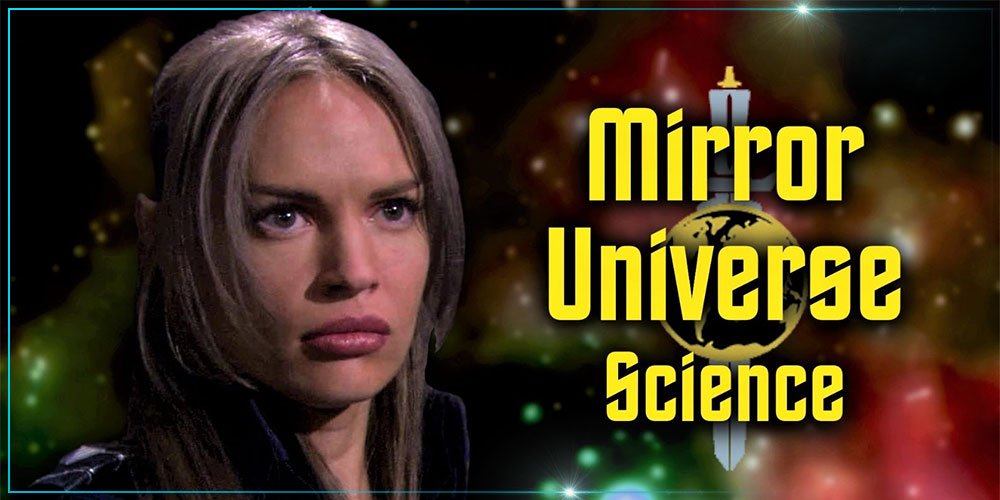Hey guys, for decades, the Star Trek franchise—in addition to exploring various sectors of our Milky Way Galaxy—has occasionally given us glimpses of alternate timelines and parallel universes. This is a tradition that dates back to The Original Series and has only become more prevalent since the introduction of the so-called Kelvin timeline in 2009. However, one of the most frequently—actually, the most frequently-visited alternate universe in Star Trek—is the “mirror universe.”
First seen in The Original Series episode “Mirror, Mirror,” this alternate reality’s inhabitants possess more fascistic tendencies, with cooperation, freedom, and equality being viewed as “dangerous fantasies.” Mirror humans, called Terrans, lead the Terran Empire—a brutal, repressive counterpart to the United Federation of Planets. Imperial Starfleet officers are seen performing a sort of “Roman salute,” and much of the Empire’s iconography and titles are borrowed from the mythologized Roman tradition. While this initial outing cranked the campiness of The Original Series up to 11, later instalments seem to take it more seriously…for better or worse.
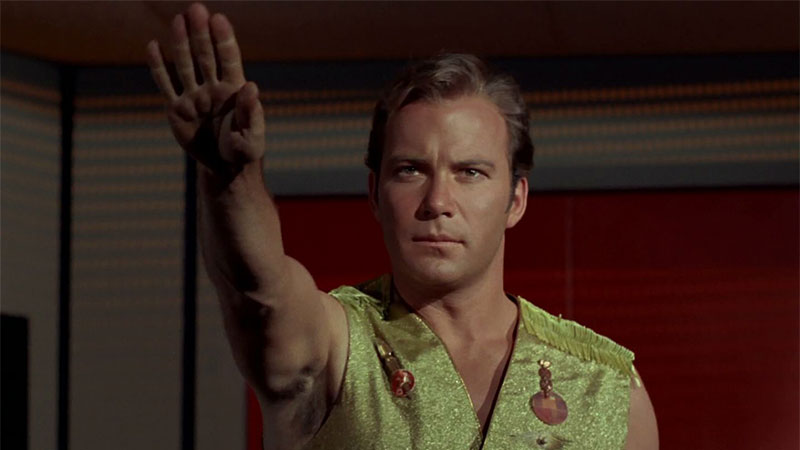
In episodes of Deep Space Nine, we see a few crossovers to the mirror universe over 100 years later, where the Terran Empire has fallen to the Cardassian-Klingon Alliance, inspiring a “Terran Rebellion.” With Enterprise and Discovery adding even more to the lore involving the mirror universe—whose history is delicately intertwined with that of the prime reality—many have attempted to identify a point of divergence between the two universes’ histories. One of the reasons for this is to pinpoint where exactly in the development of human civilization things “went wrong,” and Earth decided to go the route of conquest rather than peaceful exploration.
I made a video years ago detailing a theory of mine regarding the mirror universe’s origins, but with new context, I think it’ll be interesting to explore more alternative ideas in this vein. In this video, I’ll dive into the “science” presented in the shows to justify the mirror universe’s mere existence. I’ll also examine various arguments used to posit an origin of the mirror universe, dispelling myths along the way using evidence from canon and other inferences. With that, let’s get started.
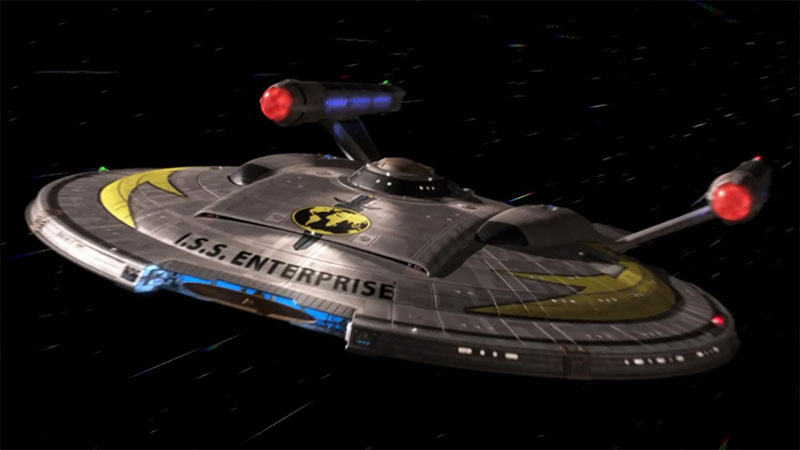
The “Science”
The explanation given in “Mirror, Mirror” for the mechanism of travel to the mirror universe is a transporter malfunction during an ion storm. This ionic activity is the same sort of phenomenon that precedes the arrival of the Narada through a red matter singularity in the 2009 Star Trek film. But specifically in regards to the mirror universe, its relationship with the prime universe is further explored in the Enterprise episode “In a Mirror, Darkly,” in which the ISS Enterprise NX-01 crew retrieves the USS Defiant from Tholian space. The Defiant has been pulled through an “interphase rift” from 2268 of the prime reality, as seen in The Original Series episode “The Tholian Web.” Access to Defiant technology in the 22nd century gives the Terrans a leg up to conquer pretty much all of the known space by the 23rd century.
All right, now, if all that sounded confusing—and there’s definitely a lot of crossing over between different time periods and universes in an attempt to retroactively tie things together—just know that the Terrans gain access to advanced technology that helps accelerate their takeover of the Alpha and Beta Quadrants. Anyway, this other, more dangerous method of crossing over—via spatial interphase—tells us a little bit about the relationship between the two realities.
They mirror each other, naturally, with what happens on one side seeming to affect what happens on the other in some way, even across centuries and down to the scale of the same people existing in both worlds. They are parallel, and they sync periodically—such as in “The Tholian Web” and in DS9—often during times of intense conflict and preceding major alterations to the trajectory of both timelines.
All of this is to say, the mirror universe is not just another random quantum reality with a huge number of coincidences. No, the prime and mirror universes share a special link—seemingly as the moral antithesis of each other. Discovery deepens this connection by explaining the mycelial network acts as a sort of “highway” between different parts of the multiverse. And on top of this, despite their relative “closeness” to each other for centuries of their respective histories, as we learn in season 3, this connection can be severed. In fact, after the last crossing in circa the 27th century, both universes have been drifting further apart. Of course, the plausibility of any of this in real scientific terms is dubious.
We hear terms like “interphase” and “multiverse” thrown around quite a bit, but what does modern physics tell us about the possibility of space beyond our observable universe? Well, as you can probably imagine, there are several mathematical theories that attempt to uncover the true nature of reality.
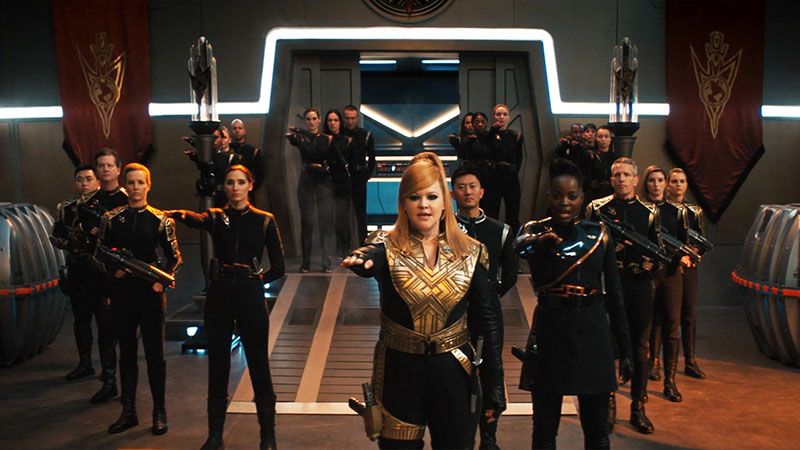
One of the most well-known is the many-worlds interpretation of quantum mechanics, which posits that all possible outcomes of an event manifest in different parallel universes. Developed by physicist Hugh Everett, the many-worlds hypothesis is intended to serve as a resolution to the so-called “wave function collapse.” In the Copenhagen interpretation, all outcomes of any given event exist in a quantum superposition until one is observed, and this superposition, or wave function, ceases to exist. This gives rise to paradoxes such as Schrödinger’s cat—is the cat alive or dead? Both—until it’s just one. But how can that be? Many worlds address this by stating that each universe has its own wave function, and theoretically, there could be an infinite number of such universes.
This theory is given stock in Star Trek, with characters waxing poetic about “infinite possible realities,” a set that also includes the mirror universe despite its…unique attributes. Given that there are different types of infinity, though, it should be noted that this doesn’t mean all possible worlds in fact exist, just that there are infinitely many variations on the four-dimensional spacetime we’re familiar with.
But where do all of these alternate realities physically exist? Well, although the mycelial network does provide a sort of connective tissue between the universes, as far as the geometry (or the geography) of the multiverse…no one knows, not even Star Trek. There are, again, many theories that try to offer explanations for how different permutations of spacetime interact with each other. One is string theory, a framework of quantum gravity that describes fundamental particles as one-dimensional vibrating strings. String theory comes in many forms, all of which try to describe the four fundamental forces using quantum mechanics and abstract math.
In this way, string theory is referred to as a “theory of everything,” though disagreements exist over how much emphasis to put on certain elements like supersymmetry, which creates theoretical particle pairs as a way to describe cosmic inflation. Between this and, well, the fact that it’s incredibly difficult to test much of this stuff, no “theory of everything” has been declared—this is one of the big unsolved problems in physics.
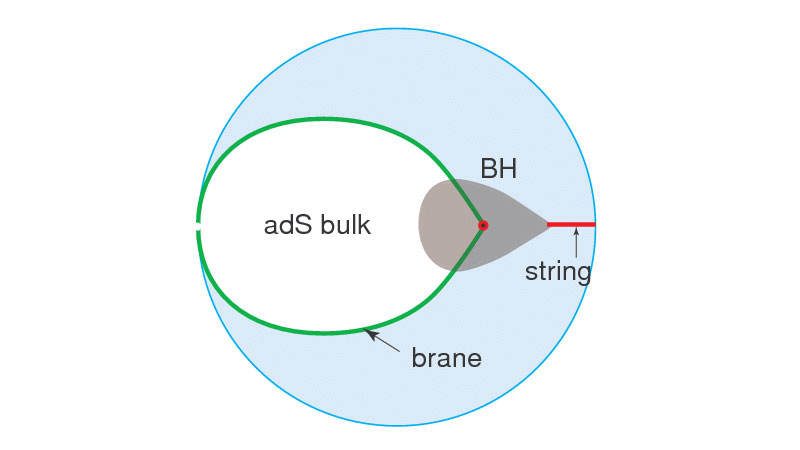
Anyway, string theory supposes the existence of multiple spatial dimensions beyond our lowly three. Variations of the theory posit up to ten, eleven, or even twelve dimensions, many of which are “compacted” inside other dimensions at scales smaller than the Planck length, or 1.6 x 10-35 meters. This compactification would be especially of interest at the centres of black holes since Einstein’s theory of general relativity cannot fully describe such regions. An alternative model is the so-called “braneworld” scenario, in which different dimensions are stacked on top of each other. In this model, our 4D spacetime exists on a “membrane” floating through a multidimensional “bulk,” and other “membranes” can float by us and sometimes collide, causing “big bangs.”
Gravity would arise from strings propagating through this larger space and intersecting our reality at a particular orientation, making it weaker than electromagnetism and the strong and weak nuclear forces. The prime and mirror universes could thus exist on floating branes that are very close to each other. As for interphase space, it could arise from a supersymmetric field that is quantum entangled across both universes or an analogous particle field that periodically phase shifts such that the barrier between worlds is thinner.
While the braneworld scenario is fun to think about, I should clarify that one major component of the many-worlds interpretation is that there is only one universe that is in a constant superposition of states. In other words, all of these outcomes occupy the same physical space, which is one reason that we…well, can’t access these other universes in real life. The Schrödinger equations imply that there’s a single universal wave function, and everyone and everything occupies multiple states simultaneously. We only observe “our” reality as such because, well, we can only observe one outcome.
Thus, every quantum reality really is a variation on our spacetime—and claims of light being “different” aside, I think the same applies to the mirror universe. Other models would suggest that the two universes might be cyclical repetitions of the same reality, with different choices being made in each timeline, or they could exist in pockets of the same infinitely large inflationary universe…but I don’t like either of these theories as much as the possibilities that string theory brings to the table. Given the fact that so many Star Trek characters have doppelgangers in the mirror universe, what could possibly be compelling these similarities to manifest? We know the two universes are linked by the mycelial network and intersect at interphase space, but that doesn’t seem like enough. Something else must be going on.

Alternative Origins?
It’s quite tempting to say that the mirror universe is some weird, twisted experiment created by Q or some other intelligent, powerful being. Perhaps it’s part of his trial for humanity to test the limits of our barbarism, or perhaps the prime universe is their true laboratory project, setting humanity on a brighter path to better ourselves. Of course, you could stretch this to its logical conclusion and say that all the Trek realities are “created” by an “intelligent designer,” which, while obviously true in the real-world production sense, is not very satisfying in-universe. Trek is about exploring the galaxy and uncovering mysteries using (admittedly modified) scientific inquiry.
There are obviously plenty of fantastical and borderline supernatural entities that Starfleet encounters, but as the Q themselves would explain, these entities could still be explained using science, just not science that the Federation can presently comprehend. As for simulating entire worlds, well, the Q is certainly powerful enough to do a lot of things, but it’s unclear if they would have the motivation to do something like this. Obviously, Q can create illusions as we see in The Next Generation finale “All Good Things…” but as we learn in Voyager, the Q Continuum is culturally stagnant…if they were busy creating simulations of infinitely possible quantum realities, they’d never get bored. And though the Q is aware of possible futures, they can still be surprised as we see on multiple occasions. They’re not truly omnipotent.
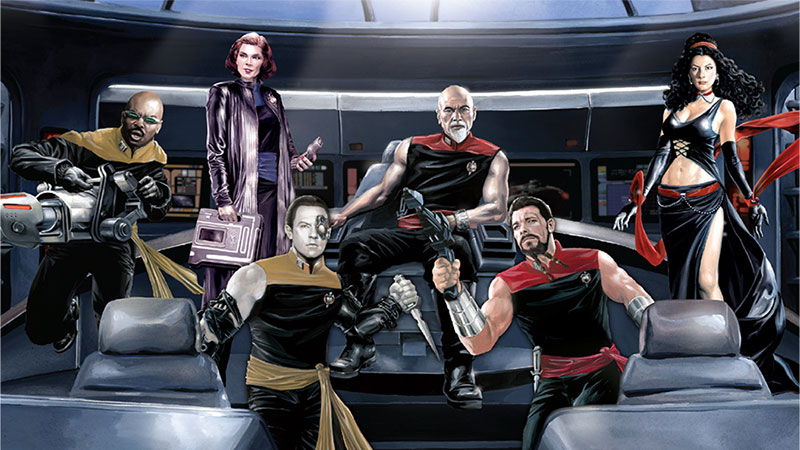
But enough about the Q…there could be yet another powerful force at work. In fact, while Gene Roddenberry’s only involvement with the mirror universe during his lifetime was a rewrite of the “Mirror, Mirror” script, he did have some interesting ideas that pertain to the relationship between different manifestations of spacetime. One of these ideas has to do with “The Traveler,” a mysterious being whom the Enterprise-D encounters in the 2360s. The Traveler, whose species is unnamed, has the ability to alter space, time, and even warp fields at will, and he demonstrates this by taking the Enterprise to the Triangulum Galaxy and then to the “end of the universe,” whatever that means. But at the “end of the universe,” as depicted, thought and matter starts to become one and the same. That’s right, we’re getting into Doctor Strange territory. The universe is, in fact, powered by thought, the Traveler says. This is what Roddenberry also believed—that the true nature of reality is so much more than what we can immediately see in our own little bubble.
We do know that in the Star Trek universe, thought can be powerful…and so, perhaps the mirror universe is powered by the thoughts of its inhabitants. What one person does on one side of the looking glass, their counterpart does the opposite…or just chooses to stab somebody, for what it’s worth. It’s possible, then, that every universe has its own “mirror” reality, and in fact, the Kelvin timeline is shown to have a mirror universe as shown in an IDW comics line. However, I don’t think this is essential, as it arguably cheapens the impact of the “main” mirror universe…to the extent that its sheer campiness doesn’t already, but I digress.
In Conclusion
Besides the special link that brings the prime and mirror universes together, what about the point where their two histories diverged? That’s a question I’ll attempt to answer in a future video.
Watch The Latest Video By Orange River Media Below
Thanks for watching! I’m interested to hear your thoughts in the comments. If you haven’t yet subscribed, be sure to do that as well so you won’t miss future uploads and click the bell icon to receive all notifications. If you want to support my work even further, becoming a patron at patreon.com/orangeriver is a great way to do so.
I’ll see you in the next video…live long and prosper.
You can find Orange River Media at the links below
- YouTube: https://www.youtube.com/orangeriver
- Twitter: https://www.twitter.com/orangerivernw
- Instagram: https://www.instagram.com/orangeriver.nw
- Facebook: https://www.facebook.com/orangerivernw
- Patreon: https://www.patreon.com/orangeriver

